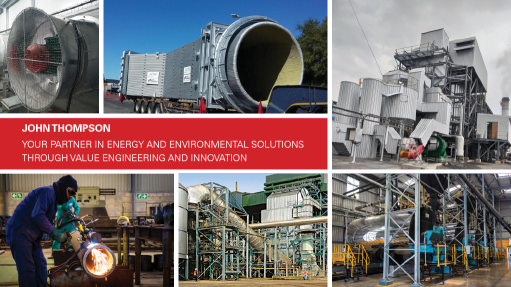Taking the ‘ge-volt’ out of power surges – part one
This article has been supplied.
By: Kenneth Lourens
Understanding Power Surges
A power surge, also known as a transient, is a brief but intense spike in electrical current, voltage, or power within an electrical circuit. This phenomenon occurs when there is an interruption in the electrical flow, followed by a sudden resumption, or when excess electricity is fed back into the system. Power surges manifest as short bursts of overvoltage that can damage, degrade, or destroy electronic devices across residential, commercial, industrial, manufacturing and medical environments. These surges can reach magnitudes of several thousand volts.
Even though voltage surges occur for very brief durations, they are highly destructive, sometimes reaching several kilovolts within milliseconds. Modern electronic devices and microprocessor-controlled equipment are particularly vulnerable to these surges, which can cause irreversible damage.
Causes of Power Surges
Power surges originate from several sources, including:
Natural causes such as lightning strikes, trees hitting power lines, or even animals causing damage or interference with equipment. Natural factors are unpredictable and can severely impact electrical systems, often resulting in instantaneous failure owing to excessive heating or burnout.
External causes such as power restoration following a grid blackout (e.g., Eskom outages) and surges travelling through power lines reaching connected devices.
Internal causes include switching on or off high-power devices such as motors and industrial machinery, faulty wiring, overloaded circuits, defective insulation, grounding issues, loose electrical connections, electromagnetic interference from inductive coupling, switching between main power and backup power sources, and short circuits.
The most common culprits of power surges are high-power electrical appliances such as elevators, air conditioners and refrigerators. The operation of these devices turning on and off can create voltage fluctuations that disrupt the steady flow of electricity. Similarly, power interruptions owing to loadshedding or faults in the electrical grid produce similar effects, leading to network instability. When power is restored, a sudden surge in electrical load can result in dramatic voltage fluctuations, increasing the risk of short-term overvoltage, also known as voltage spikes. If these conditions persist over time, they can lead to permanent equipment damage.
When expensive and power-sensitive equipment is installed on the premises, it must be protected from damage, component failure, and wear and tear. Laptops, telecom equipment, medical apparatus/electronic instruments, and power distribution panels are examples of voltage-sensitive devices that can easily be damaged by a power surge, causing a supply breakdown. Power surges can shorten the lifespan of a computer or even erase all of its data.
Risk Associated with Power Surges
Power surges can present many dangers. An overflow of electricity to an appliance may cause the machine/equipment to overheat. In some instances, the machine may even catch fire.
Given South Africa’s frequent loadshedding and electricity grid failures, power surges have become a significant challenge and concern. The rise in insurance related claims has prompted Insurers to modify policies, introducing exclusions and restricting indemnity if certain warranties are not complied with.
These factors may not have an immediate destructive effect, but with repeated occurrences, they can cause increased wear and tear, eventually leading to shortened service life and frequent maintenance.
Need for Surge Protection
Whether you need a surge protector or not depends on the devices you are connecting to the power source or supply. Surge protectors will help to extend the lifespan of electrical and electronic devices at home, in the office, or on industrial premises.
Consort Technical Underwriting Managers
Article Enquiry
Email Article
Save Article
Feedback
To advertise email advertising@creamermedia.co.za or click here
Comments
Press Office
Announcements
What's On
Subscribe to improve your user experience...
Option 1 (equivalent of R125 a month):
Receive a weekly copy of Creamer Media's Engineering News & Mining Weekly magazine
(print copy for those in South Africa and e-magazine for those outside of South Africa)
Receive daily email newsletters
Access to full search results
Access archive of magazine back copies
Access to Projects in Progress
Access to ONE Research Report of your choice in PDF format
Option 2 (equivalent of R375 a month):
All benefits from Option 1
PLUS
Access to Creamer Media's Research Channel Africa for ALL Research Reports, in PDF format, on various industrial and mining sectors
including Electricity; Water; Energy Transition; Hydrogen; Roads, Rail and Ports; Coal; Gold; Platinum; Battery Metals; etc.
Already a subscriber?
Forgotten your password?
Receive weekly copy of Creamer Media's Engineering News & Mining Weekly magazine (print copy for those in South Africa and e-magazine for those outside of South Africa)
➕
Recieve daily email newsletters
➕
Access to full search results
➕
Access archive of magazine back copies
➕
Access to Projects in Progress
➕
Access to ONE Research Report of your choice in PDF format
RESEARCH CHANNEL AFRICA
R4500 (equivalent of R375 a month)
SUBSCRIBEAll benefits from Option 1
➕
Access to Creamer Media's Research Channel Africa for ALL Research Reports on various industrial and mining sectors, in PDF format, including on:
Electricity
➕
Water
➕
Energy Transition
➕
Hydrogen
➕
Roads, Rail and Ports
➕
Coal
➕
Gold
➕
Platinum
➕
Battery Metals
➕
etc.
Receive all benefits from Option 1 or Option 2 delivered to numerous people at your company
➕
Multiple User names and Passwords for simultaneous log-ins
➕
Intranet integration access to all in your organisation




















